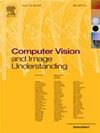超越阴影与光明:人脸识别的社会公益奥德赛
IF 4.3
3区 计算机科学
Q2 COMPUTER SCIENCE, ARTIFICIAL INTELLIGENCE
引用次数: 0
摘要
人脸识别技术虽然在技术发展上具有不可否认的变革性,但在人道主义事业中仍然明显得不到充分利用。这项调查突出了它在处理重大社会紧急情况方面的潜在效用,从迅速查明受灾个人到寻找失踪儿童。我们研究了面部特征退化、老化、遮挡和低分辨率图像引起的技术复杂性。这些问题在实际场景中经常遇到。我们对最先进的模型和相关数据集进行了全面的回顾,包括对现有和策划的集合的荟萃分析,如新引入的Web和生成的受伤面孔(WGIF)数据集。我们的评估涵盖了当前人脸识别算法在现实场景中的性能,以印度巴拉索尔火车事故为例。通过研究衰老对面部特征的影响以及传统模型在处理低质量或遮挡图像方面的局限性等因素,我们展示了将面部识别应用于社会公益所固有的复杂性。我们讨论了未来的研究方向,强调需要跨学科合作和创新的方法来增强人脸识别系统在人道主义背景下的适应性和鲁棒性。通过详细的案例研究,我们提供了对当前方法有效性的见解,并确定了需要改进的关键领域。我们的目标是鼓励为社会福利应用开发专门的人脸识别模型,有助于在危急情况下及时准确地识别。本文章由计算机程序翻译,如有差异,请以英文原文为准。
Beyond shadows and light: Odyssey of face recognition for social good
Face recognition technology, though undeniably transformative in its technical evolution, remains conspicuously underleveraged in humanitarian endeavors. This survey highlights its latent utility in addressing critical societal exigencies, ranging from the expeditious identification of disaster-afflicted individuals to locating missing children. We investigate technical complexities arising from facial feature degradation, aging, occlusions, and low-resolution images. These issues are frequently encountered in real-world scenarios. We provide a comprehensive review of state-of-the-art models and relevant datasets, including a meta-analysis of existing and curated collections such as the newly introduced Web and Generated Injured Faces (WGIF) dataset. Our evaluation encompasses the performance of current face recognition algorithms in real-world scenarios, exemplified by a case study on the Balasore train accident in India. By examining factors such as the impact of aging on facial features and the limitations of traditional models in handling low-quality or occluded images, we showcase the complexities inherent in applying face recognition for societal good. We discuss future research directions, emphasizing the need for interdisciplinary collaborations and innovative methodologies to enhance the adaptability and robustness of face recognition systems in humanitarian contexts. Through detailed case studies, we provide insights into the effectiveness of current methods and identify key areas for improvement. Our goal is to encourage the development of specialized face recognition models for social welfare applications, contributing to timely and accurate identification in critical situations.
求助全文
通过发布文献求助,成功后即可免费获取论文全文。
去求助
来源期刊

Computer Vision and Image Understanding
工程技术-工程:电子与电气
CiteScore
7.80
自引率
4.40%
发文量
112
审稿时长
79 days
期刊介绍:
The central focus of this journal is the computer analysis of pictorial information. Computer Vision and Image Understanding publishes papers covering all aspects of image analysis from the low-level, iconic processes of early vision to the high-level, symbolic processes of recognition and interpretation. A wide range of topics in the image understanding area is covered, including papers offering insights that differ from predominant views.
Research Areas Include:
• Theory
• Early vision
• Data structures and representations
• Shape
• Range
• Motion
• Matching and recognition
• Architecture and languages
• Vision systems
 求助内容:
求助内容: 应助结果提醒方式:
应助结果提醒方式:


